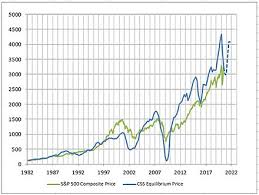
The stock market and our economy often go hand-in-hand. Investors often use the stock market as a way to predict what the economy will look like. If the markets start to crash, you can expect the economy to follow suit. On the flip side, when the stock market starts to increase, it often means the economy will begin recovering shortly after.
In 2020, the era of Covid-19 that crashed the stock market back in March, the markets seem to tell a different story than what many worldwide are feeling. Even though most of the globe took a hit with their economy (the United States GDP dropping by over 30%), investors look at the stock market and predict the future will look pretty decent.
How can you use the market movement to predict what the future will look like? First, you need to understand what influences the market before figuring out what the future of the stock market will look like.
Supply and Demand Influence
The stock market typically revolves around the notion of supply and demand. When something is in high demand, the price often rises. On the other side, when there is a low demand for a company or item, the price often drops to entice people to buy.
With this analogy, you can see why the market fluctuate so much this past year. As Covid-19 became apparent worldwide and economies shut down, the demand for, well, anything also dropped. As things began to open up again, the demand starts to increase too.
Investors use a broker or a trading platform to buy, hold, and sell stocks on the market. Using things like ECN brokers provide that needed bridge between the market and the investor.
Follow the Momentum
When predicting how the stock market will perform, momentum places a significant role. When you see prices increase the market performing, you can basically assume that the trend will continue for a bit. If things are going well, more and more will want to join, which will likely boost the momentum.
It’s important, though, to remember that momentum works both ways. At some point, the market will turn and start to dip. That means momentum will follow and continue driving the market downwards.
Follow the S Curve
Have you heard of the s-curve? Rarely does the stock market follow a straight line. Instead, it has its ups and downs before it rapidly shoots up. The s-curve ties in nicely with momentum, as it is the momentum that creates the upward curve investors like to see.
The s-curve allows you to have a general idea of when a boom will happen or when it’s time to be cautious. When you see multiple little ups and downs, it’s not a bad idea to get ready for an upward trend (use a legitimate platform, like BDSwiss is regulated).
Remember, no matter what, there is no sure way to predict the stock market’s future. Using past trends, following the momentum, and comparing with the economy, we can make an educated prediction of the market’s future.

